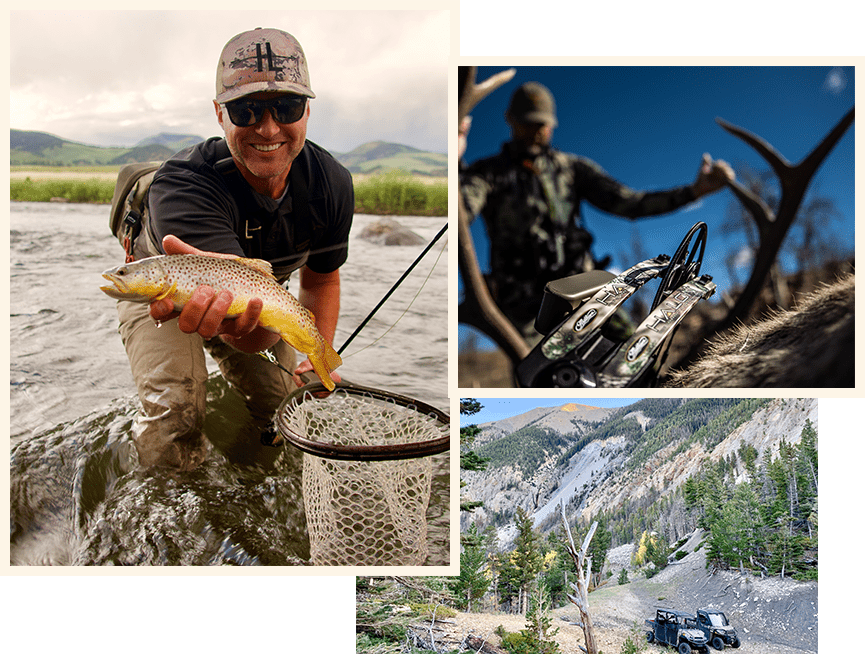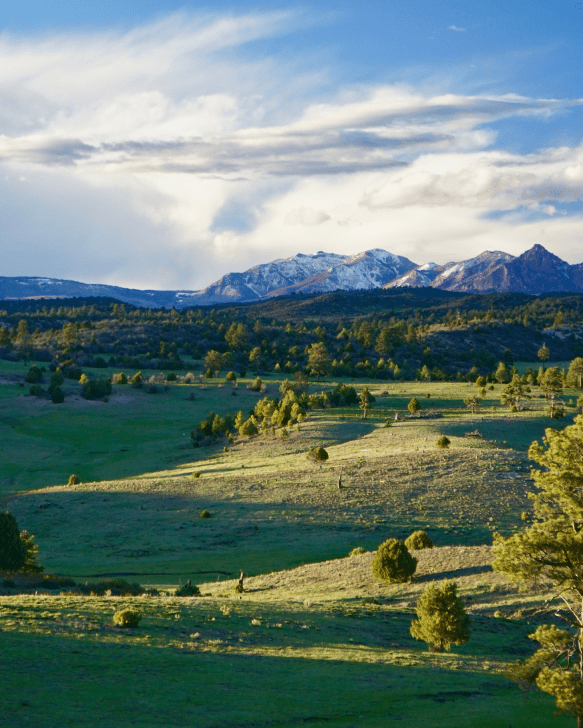Across the Rockies, melting winter snow is about to unleash a torrent of spring runoff. The big winter of 2022-2023 is a blessing for most folks in the West, particularly ranch owners dealing with a significant drought.
But the big winter is a boon to fly fishers, too, and fortunate ranch owners who have fishable trout water on their land can enjoy twice the benefits. Heavy winter snow translates into ample water later in the summer and fall when it’s needed most. It’s great for hay crops. It’s ideal for livestock. And it’s necessary for quality angling.
But first, anglers, regardless of where they fish, need to get through runoff. Also called “mud season” by locals, runoff presents unique challenges to anglers who want to fish rivers and streams at high water. While most just wait for water levels to even out, some die-hards keep at it.
Tips for how to fish your property during high water
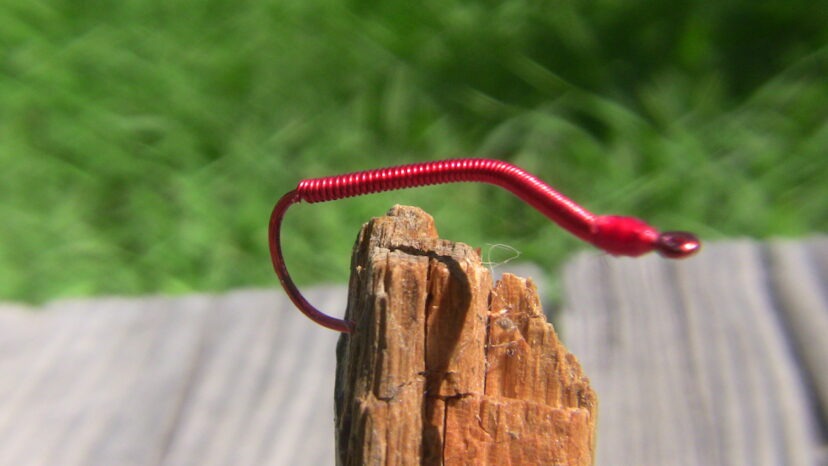
Choose your fly wisely
Just because water is high and muddy doesn’t mean fish aren’t eating. But, just as with any other time of the year, fish are keyed on the food sources that are available. They’ll be on the lookout for aquatic nymphs, like stonefly and caddis fly larvae that have been scoured off the rocks. They’ll be looking for worms, too, that end up drifting helplessly after being washed out from under cutbanks and soft earth that’s been flooded. Think about flies like the San Juan Worm, the Girdle Bug or the Copper John.
Try a weighted double-nymph rig under an indicator tight to the bank
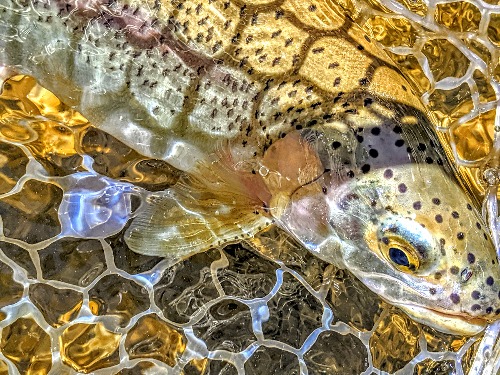
The idea is to get deep, where trout are likely holding to save energy during the high flows. Using a longer leader (say, 14-16 feet) and putting an indicator at the halfway mark in the leader will allow the flies to drift in the feeding lane longer. Fishing in muddy water is absolutely doable if you can reach the fish.
Use a fluorocarbon-monofilament leader-tippet combination
While monofilament is a great leader and tippet material, fluorocarbon sinks better. Tying a four-foot section of fluorocarbon tippet to a 4x leader will create an L-shaped presentation. Put an indicator or a high-floating indicator fly (like a Chernobyl Ant) at the connecting knot. This way, you’ll be able to see where your flies are drifting through the strike zone. One note: fluorocarbon leader and tippet doesn’t break down in the environment. If you use it, take care to keep your clippings.
Try Euro-nymphing
This high-sticking method of fly fishing is very effective. Tournament fly fishers have pioneered this technique in eastern Europe over the years in order to fool wary trout. In high water, a longer Euro-nymphing rod (at least 10 feet) can extend drifts and put flies on the perfect line. It’s a great high-water option.
Consider tenkara angling
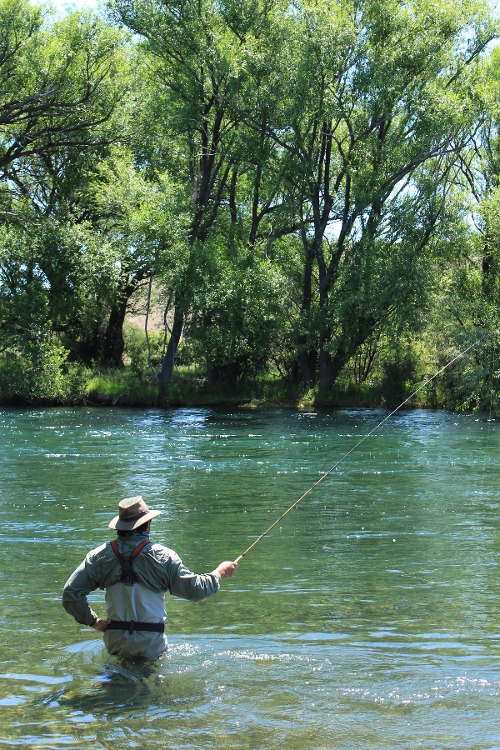
This Japanese form of fly fishing incorporates a very long rod (usually 12-15 feet) and a level line attached to a tippet and a fly. There is no reel. That may sound like a handicap. But with 15 feet of rod and 15 feet of line, that’s plenty of reach for most trout situations. And it’s great for high-stick nymphing, not unlike the Euro-nymphing technique. It’s a great way to fly fishing spring runoff.
Hit the banks
Trout will do whatever it takes to stay out of the heaviest currents and preserve energy. Fish the slower water at the banks and behind structure. That’s where they’ll be – that’s where your fly should be.
Bottom line
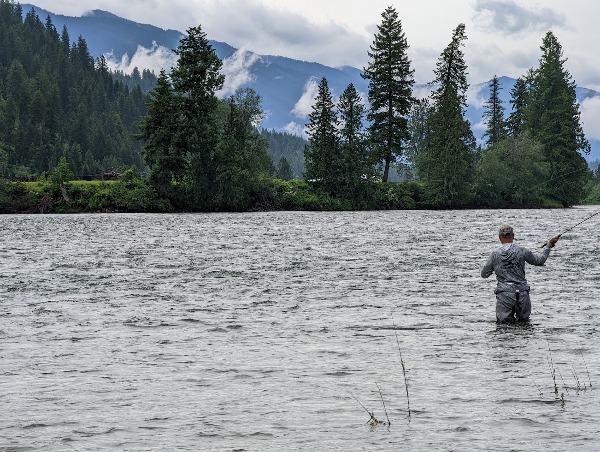
Just because spring runoff has rivers and streams high and muddy doesn’t mean fishing has to stop. By using the right flies and fishing the right water, fly fishers can find trout even through the worst of runoff.

